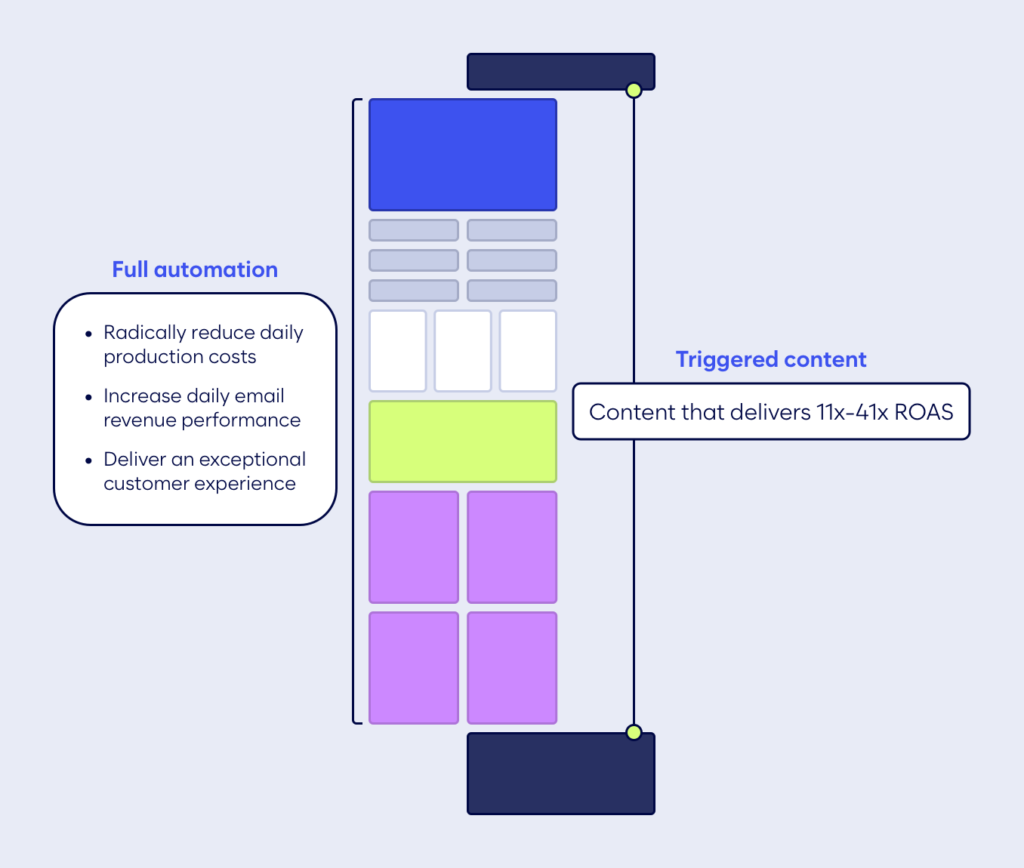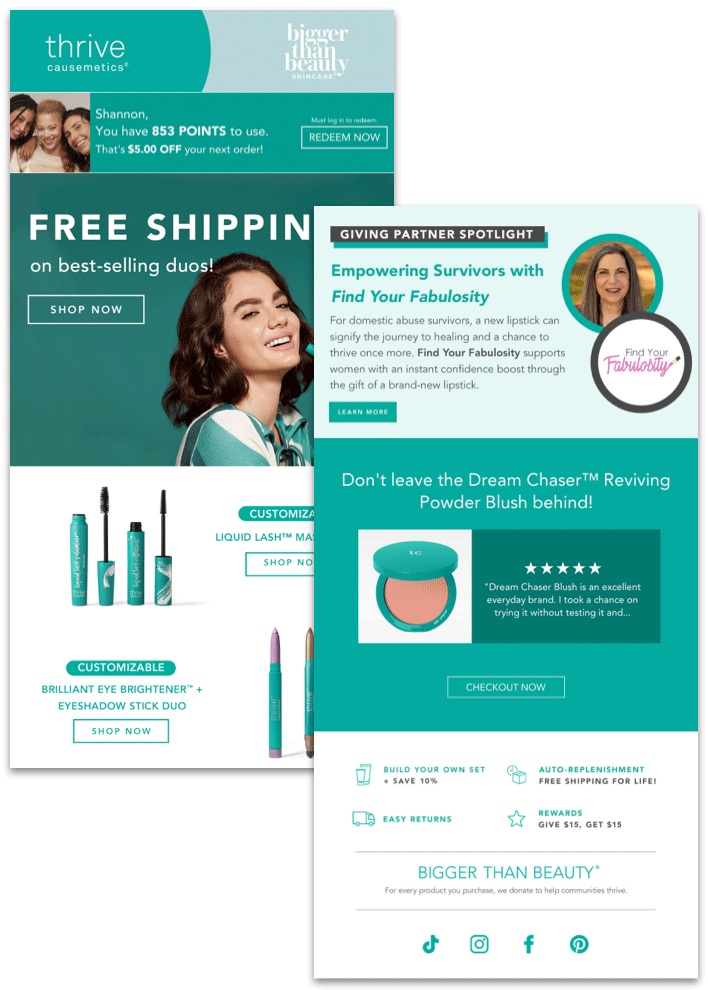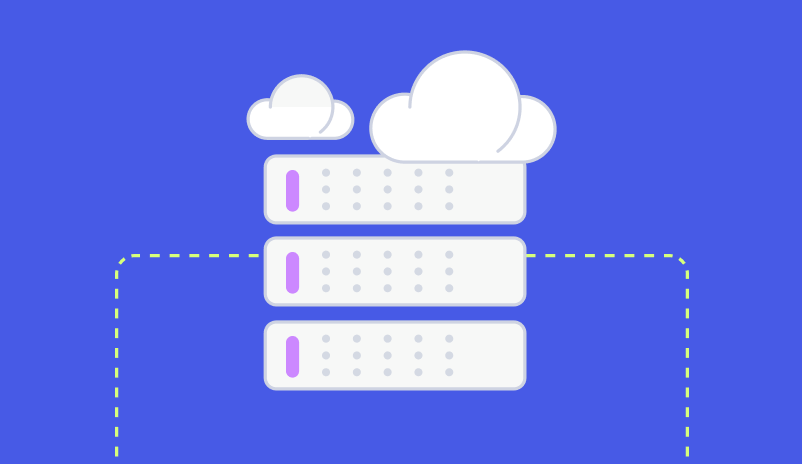How enterprise retailers can use primary and secondary calls to action in emails more effectively
In the Promotions tab era, where customers skim quickly, strategically placing revenue-driving CTAs at the top and bottom of your email can make or break your results.

Every email you send should drive action. But not every call to action (CTA) belongs in the same place. Some CTAs are built to generate revenue. Others support engagement or long-term brand value.
In the Promotions tab era, visibility is limited. Customers skim quickly, and if your most important messages aren’t strategically placed, they’ll be missed. That is why your CTA strategy has to do more than look good; it has to help you drive revenue in every email you send.
The key is balancing primary revenue-driving CTAs with supporting content that builds engagement for the long term. The trio of Zembula’s Smart Banners™, Smart Kickers™, and Smart Blocks™ help enterprise retail email marketers structure emails for performance, giving every message a clear focus and more opportunities to convert.
Where do your primary CTAs belong?
Your most important CTAs, the ones directly tied to revenue, need to be the most visible. These include actions like completing a purchase, updating a subscription, activating a loyalty offer, or responding to a limited-time promotion. They’re time-sensitive, conversion-focused, and too valuable to bury.
In the Promotions tab era, where consumers often approach their emails like a curated feed, they skim or scroll past marketing content. So when they do open messages, placing key CTAs at the top and bottom of your email increases the chance they’ll be seen and acted on.

That’s what Smart Banners and Smart Kickers are built to do. Banners appear at the top of messages. Kickers reinforce the same offer or prompt follow-up action at the bottom. Together, they bookend the message with real-time, personalized content.
And because both are powered by Dimensions™, Zembula’s platform for automating dynamic personalization, they update at the moment of open, ensuring customers always see the most relevant message, regardless of when the email was sent.
Common primary CTAs include:
- Abandoned browse or cart reminders
- Welcome or reactivation prompts
- Loyalty milestones or point redemption
- Birthday or subscription renewal offers
These core triggers shouldn’t only live in isolated flows and are ideal for being surfaced inside daily sends via Smart Banners and Smart Kickers.
Secondary CTAs should support — not compete
Secondary CTAs can still drive meaningful action, but they’re not the first thing your audience should see. Think product recommendations, customer reviews, videos, loyalty updates, or personalized content blocks around specific merchandising.
These elements help educate, reinforce, and re-engage. But if they’re placed above the scroll, they can compete with your primary CTA and dilute performance.
That’s where Smart Blocks come in.

Designed to sit within the body of your emails, Smart Blocks let you personalize without distracting from the core message. These dynamic content blocks are ideal for showcasing additional product information, surfacing behavioral insights, and adding touchpoints like countdown timers and polls.
And because they update in real-time, you don’t have to rebuild templates or delay your send.
Common secondary CTAs include:
- Product or category recommendations
- 1:1 content blocks or personalized hero images
- Add-to-calendar for events and sales
- Geolocation weather-based content
- Educational updates, videos, polls, or loyalty point info
Smart Blocks are how enterprise retail teams like J.Crew and Thrive Causemetics scale secondary personalization without compromising revenue-driving focus.
See how we’ve helped enterprise retail brands like J.Crew generate 41x return on spend by working with Zembula here.
Structure drives performance
When personalization is scattered or inconsistent, it’s not only hard to measure what’s actually working, but it can be detrimental to performance. When you use a repeatable structure with messaging and branding that’s automated to be consistent across batch and triggered sends, you create the foundation for smarter optimization.
This structure doesn’t just increase visibility and revenue in the short term. It also creates the conditions for longitudinal testing, where you can track how different combinations of CTAs perform over time across real customer behavior — not just one-off opens or clicks.
It’s a more accurate way to evaluate what drives revenue and a smarter way to refine your strategy without guessing or false positives.
Build smarter emails that convert
When every email has a clear structure and purpose, you get more from each send — more visibility, action, and measurable results. With Smart Banners, Smart Kickers, and Smart Blocks, enterprise retailers can design emails that prioritize revenue without sacrificing flexibility.
Primary and secondary CTAs don’t have to compete. With the right placement, they can work together to move customers through the funnel and improve performance and revenue over time.
Click here to request a demo.

Randy Levy is a seasoned technology and marketing leader with a career that began unconventionally at DoubleClick in 1999. After initially being rejected, he boldly showed up on the company’s start date, earning a meeting with the VP—and ultimately, a job offer that launched his career in tech.
Today, Randy serves as the Chief Revenue Officer at Zembula, where he and his team help brands leverage real-time messaging and data-driven personalization to drive revenue. Passionate about partnerships and innovation, he is dedicated to helping enterprise retailers create greater value in their customer interactions.
Beyond his work at Zembula, Randy leads The Village, a thriving community of over 1,500 marketing and customer experience professionals who support each other in their careers.
For more on Zembula or The Village, feel free to connect with him on LinkedIn.
Grow your business and total sales




